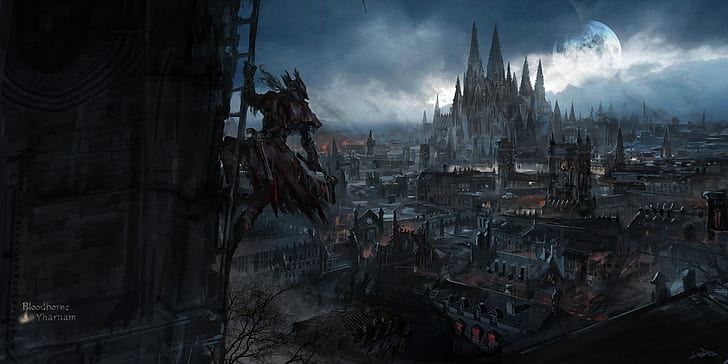Table of Contents Show
Hidetaka Miyazaki’s “Bloodborne” (2015) is a definite beast of a game, setting aside that many of the main enemies and bosses are actual beasts. Much like other games in the FromSoftware line-up, soon following its release, “Bloodborne’s” reputation quickly became one of grueling gameplay and impossible odds, a game relentless at making any victory monumental by forcing the player to carve a path of blood to get to it. While prowling the streets of Yharnam, the game’s primary setting, absolutely nothing comes easy. Yet, that only serves to sweeten the triumphs the player earns, almost forcing the player to keep carving through beasts with a blood-thirsty tinge with the temptation of sheer satisfaction and achievement waiting for them at the end.
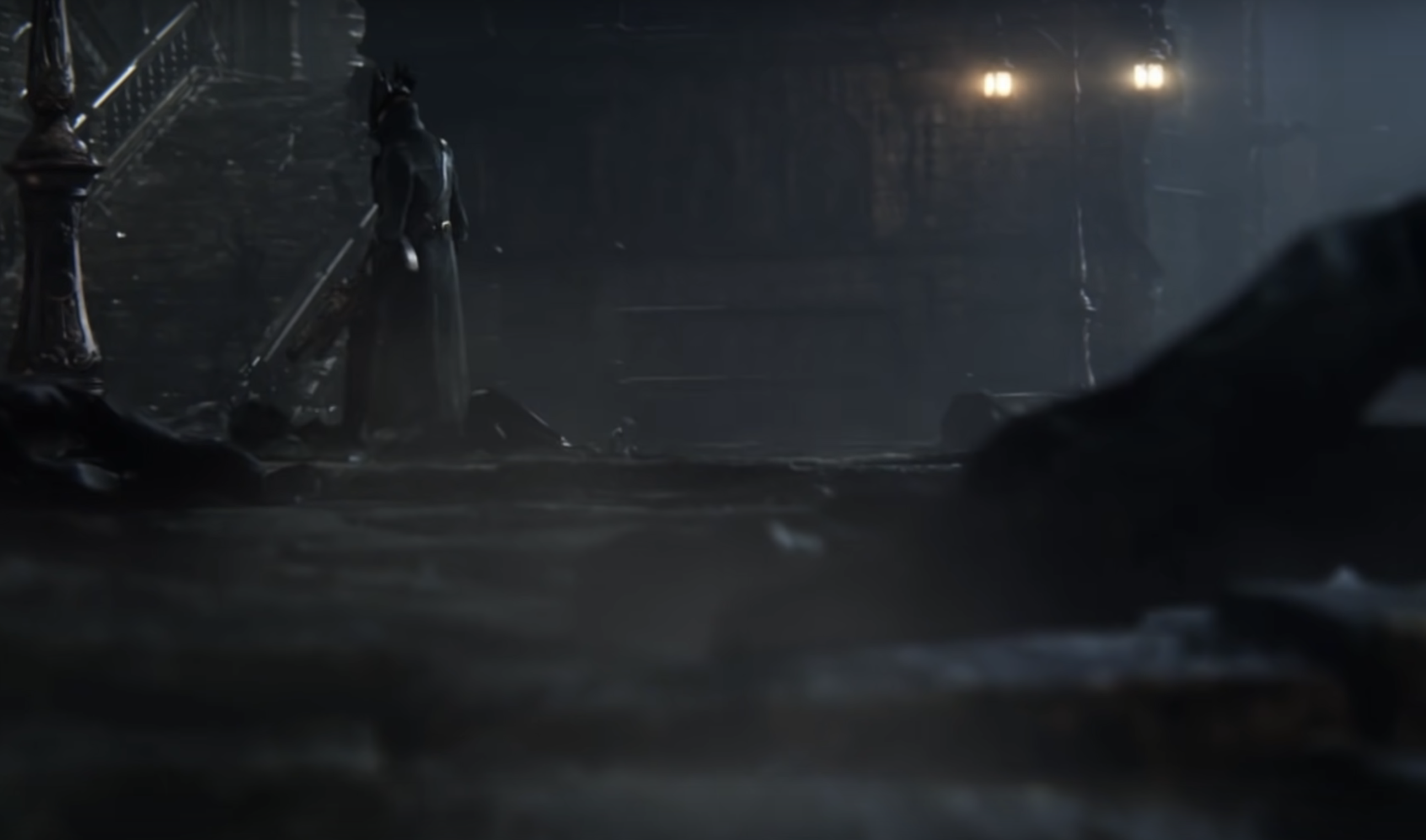
“Bloodborne,” however, takes this a step beyond implementing this in the game’s mechanics: it embeds this into its narrative. “Bloodborne” takes a unique approach to exposition compared to other pieces of media in that there is hardly any. While a few instances of direct and explicit exposition are used, those instances are vague and short, lasting a handful of seconds at best. Yharnam positively oozes suggestions of history between the ancient gothic cathedrals, the crumbling structures swallowed whole by gnarled tree roots, the denizens out on an auspicious night, but seldom do those suggestions become anything else but that: suggestions. Instead, “Bloodborne” gives just enough information to the player to keep them craving more, encouraging them through both the in-game design and external satisfaction to keep diving ever deeper into the hunt.
How The Hunt Begins
“Bloodborne,” for the unaware, begins with two cutscenes — the first begins immediately after starting the game. A blind, wheelchair-bound man signals that the player is seeking “paleblood,” a term never actually defined in the game, and that Yharnam finds itself the host of a practice called “blood ministration,” and that the mysteries thereof can be unravel provided one chooses to look. The man, whoever he is as he remains unnamed and unseen the rest of the playthrough, signals two other key facts: that the player’s character is an outsider to Yharnam and that the player is undergoing the process of blood ministration for the price of a contract.
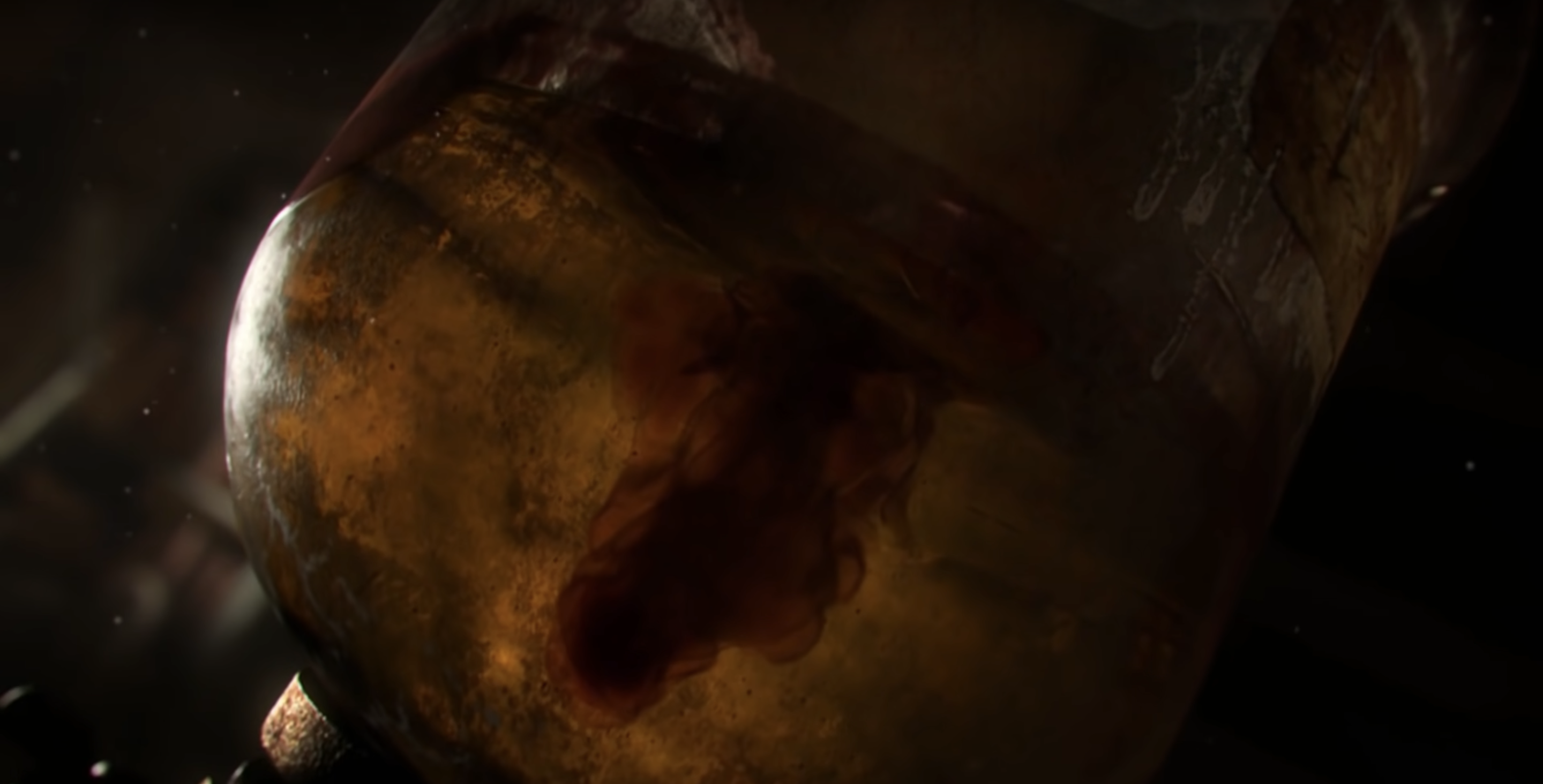
The screen cuts to black, the player has the opportunity to customize their character, and once the details are finalized, the second cutscene begins. The blood ministration begins, and the player passes out, the man reassuring them that, “whatever happens… You may think it all a mere bad dream.” (( Bloodborne. PlayStation 4, FromSoftware, 2015. )). The player awakes briefly either during or directly after the procedure to the sight of what looks to be a werewolf rising from a pool of blood. Right as the beast comes just close enough to gore the player if it so chooses, it ignites and disappears, howling in pain. Small, shriveled, ghastly creatures crawl up the sides of the cot and onto the player before they pass out again. When they awake, “Bloodborne” begins in earnest.
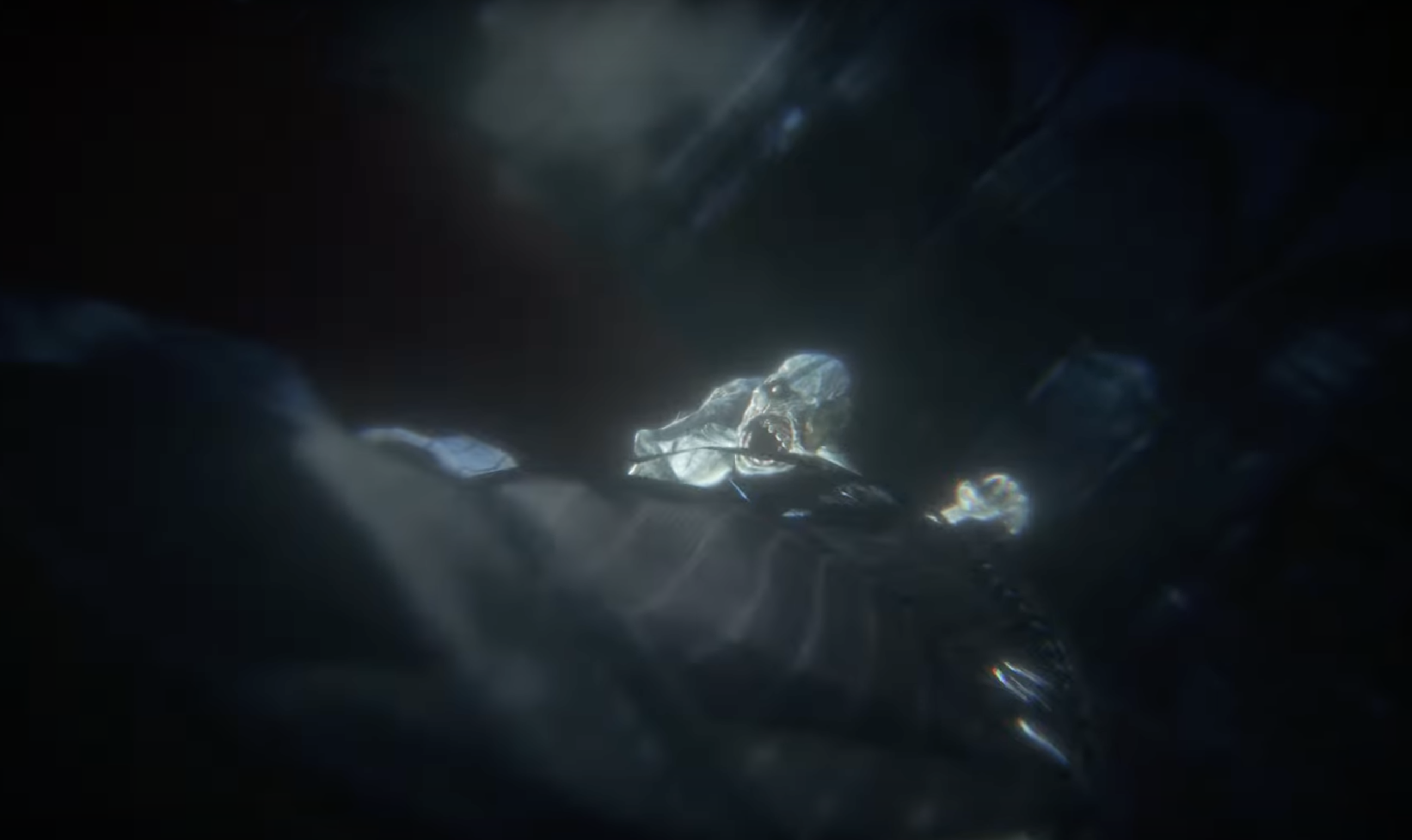
Looking at this cutscene is necessary to understand how “Bloodborne” conducts the rest of the narrative going forward. Even when the game provides exposition directly to the player, it largely relies on the player themselves to draw whatever possible meaning they can from it. In no way does the game itself do the legwork. Paleblood, blood ministration, what contract is the player signing, and why are they looking for paleblood, whatever it may be? The game provides no answers, at least not directly. What it does do is rely on implicit exposition. The player can glean that the beasts in the world have something to do with blood, that Yharnam employs a procedure known as blood ministration, and that, ergo, Yharnam may have an affinity with beasts.
Understanding Yharnam
If implicit narration is a narrative that is only ever implied in piecemeal whispers, then implicit exposition is exposition that just barely counts as such (( Artsy. “Implied Narrative.” Artsy. Accessed October 4, 2021. )). Information is delivered in some fashion, but it is the job of the reader, the player, in this case, to fit it into the story’s broader narrative. “Bloodborne” near-exclusively utilizes this form exposition, combining an installed need for discovery with exposition delivered by the environment, optional NPCs, items, and a scant few cutscenes to tell a sprawling narrative.
“Bloodborne’s” Consistency And Tone
To truly delve into how “Bloodborne” conducts its narrative, it’s essential to look at what information it withholds as well as dispenses. “Bloodborne” drip-feeds most of the bare essentials to understand the bare surface of itself to the player, but it does give those tools nonetheless. The blood ministration being centered within Yharnam, the notion that blood births beasts, that the player came to Yharnam in search of something and signed a contract for blood to do so. That it is the night of the hunt, and the player is to be a hunter, given weapons upon their first death in the Hunter’s Dream, the singular “safe place” where goods are purchased and weapons and abilities upgraded.
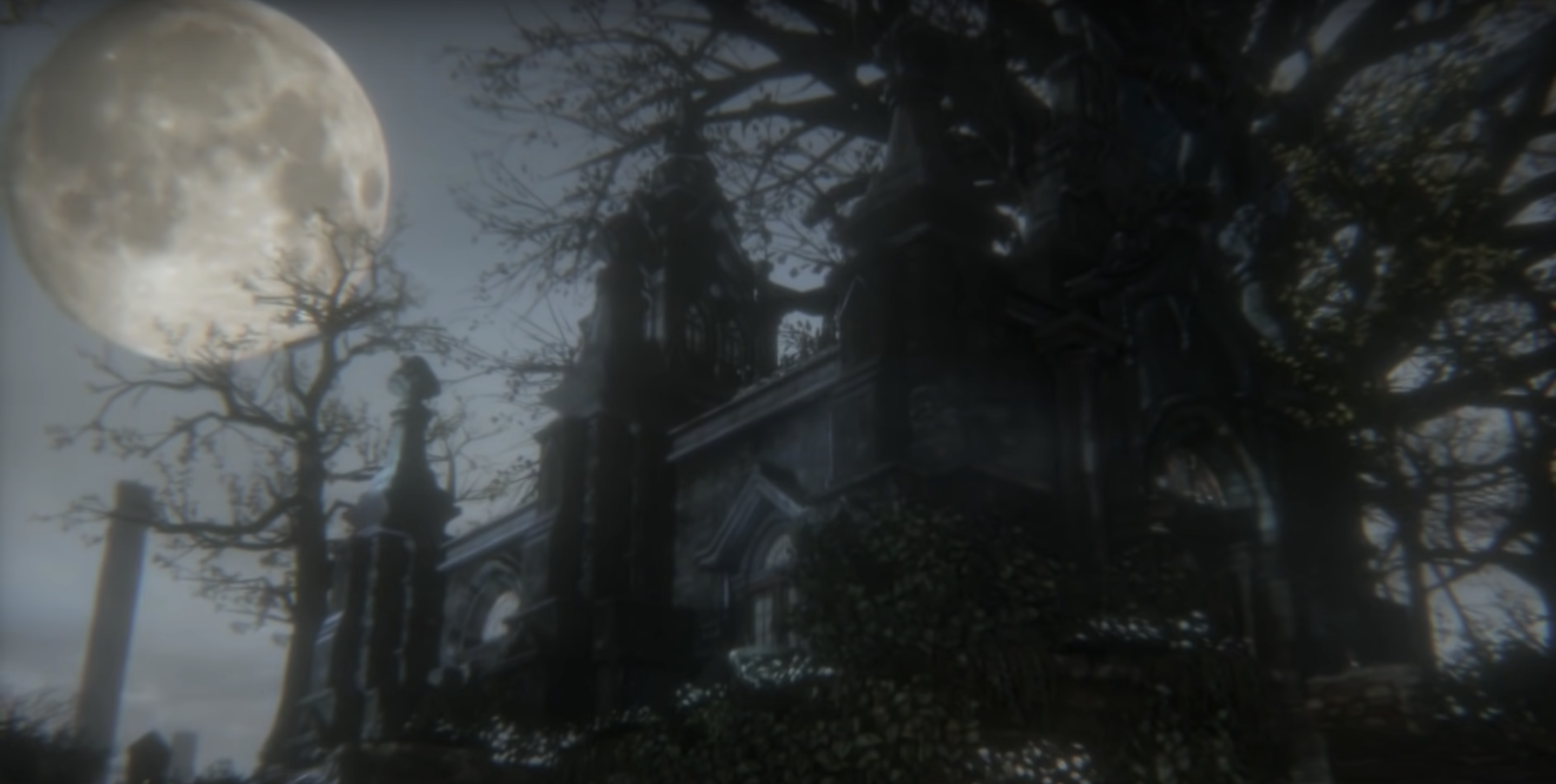
For roughly the first half of the game, and honestly, the latter half depending on the type of individual the player is, that is all that is needed to play “Bloodborne” and enjoy it. The player can understand nothing of what the game aims to tell and still have a perfectly good and serviceable experience (( Bloodborne: Beating Dark Souls’ Narrative Design. Cool Ghost, 2016. )). You are a hunter, and it is the night of the hunt. The bare-bones introduction to “Bloodborne” remains constant and that goal never changes even as the focus of the game shifts and warps from werewolves and beast-hybrids to the cosmic and unknowable forces at play. There is a concept in gaming known as “ludonarrative dissonance,” introduced by Ubisoft creative director Clint Hocking in a 2007 blog post that discusses how the game “Bioshock” pulls the player in two different directions between gameplay and the narrative tones, selfishness vs selflessness, and that the overall experience suffers for it (( Paez, Danny. “How a Galaxy Brained Video Game Term Made It into the ‘New York Times’.” Inverse. Inverse, June 28, 2020. )). It’s a problem that plagues other games in the industry, but “Bloodborne” avoids this problem entirely because the tone itself remains so consistent. At no point, despite introducing new information and delving into more of a Lovecraftian plot that has only the barest hints of foreshadowing in the beginning, does the game break from the two most core details: the player is searching for something, and it is the night of the hunt, so go hunt. Everything else falls near-perfectly into place.
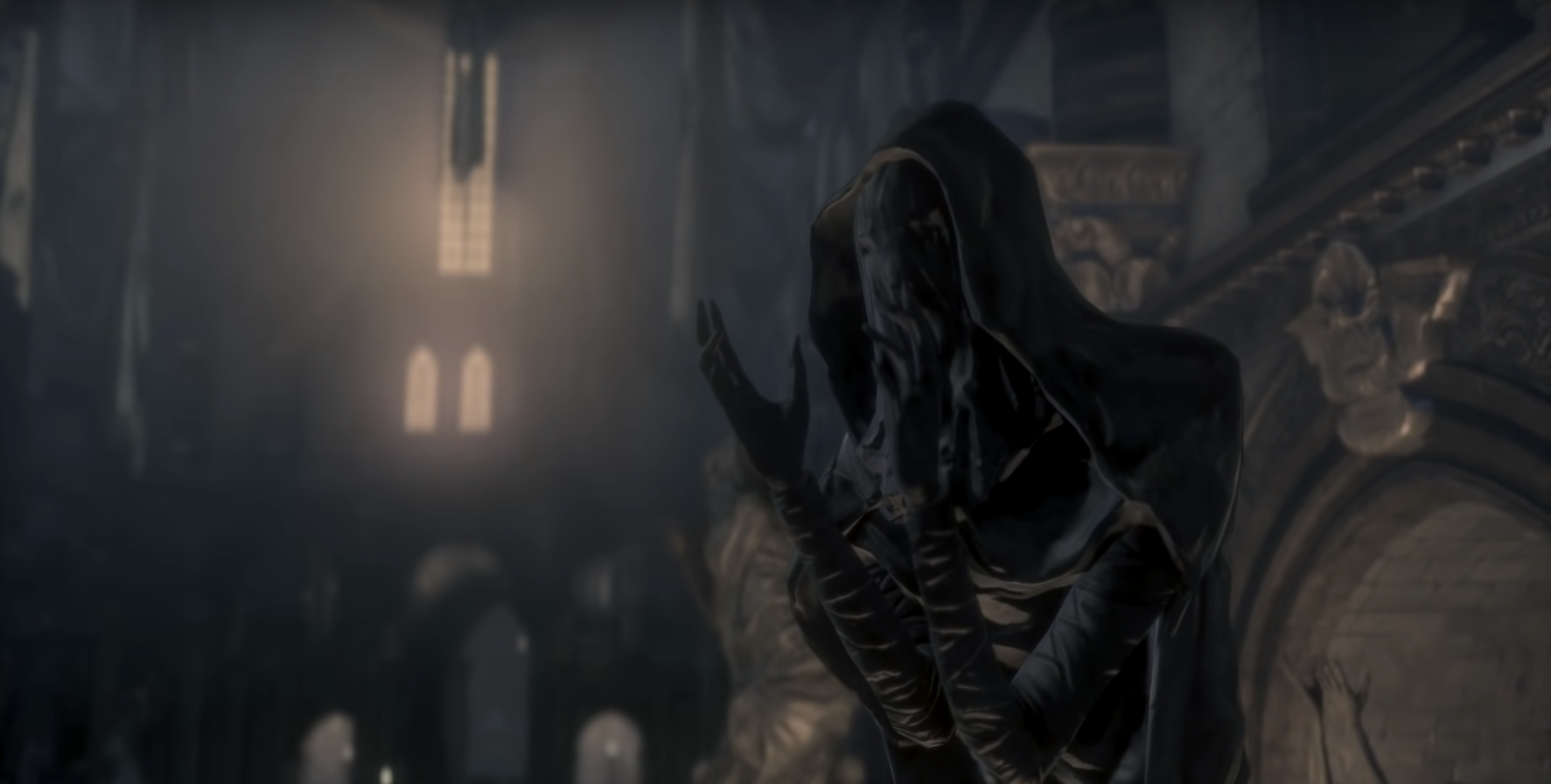
It is important to note that “Bloodborne’s” story, even if not fleshed out entirely within the game, exists as a complete narrative despite its fragmented and often confusing nature. One only needs to type “Bloodborne’s” plot” into their search engine of choice to get pages upon pages and hundreds of hours of forum discussion and video-breakdowns of what mysteries lie at the heart of Yharnam, and each and every bit of thread scholars and hobbyists alike use to construct a full tapestry comes from the game itself, not databooks or artbooks or any kind of outside source. Hidetaka Miyazaki intentionally structured the game’s narrative this way, drawing on his experience as a child reading books in English and how he was forced to fill in the blanks he did not or plain could not understand with his own imagination (( Parkin, Simon. “Bloodborne Creator Hidetaka Miyazaki: ‘I Didn’t Have a Dream. I Wasn’t Ambitious’.” The Guardian. Guardian News and Media, March 31, 2015. )). Moreover, it gives the player a sense of ownership over the game — they are the ones to put the pieces into place, they’re the ones that construct the story by playing it, and they are the ones ultimately rewarded for completing it.
Gaining Insight
“Bloodborne,” despite delivering hundreds of deaths for first-time (and veteran) players, is a game that rewards its players. In fact, there’s an entire mechanic dedicated to seeking out knowledge and side-quests tied to the main plot that encourages players to seek out secrets. Insight, a sort of currency used to purchase rare upgrade materials and exclusive armor sets, accumulates by finding new areas, discovering new bosses, and finding items called Madman’s Knowledge scattered around the environment (( Bloodborne. PlayStation 4, FromSoftware, 2015. )).
Change By Learning
“Bloodborne” takes insight a step beyond in-game currency and ties to stats and level progressions. Take, for instance, the player gaining enough insight: the environment and enemies within it change, a literal representation of gaining understanding. Enemies gain new attacks, new enemies previously hidden become visible, and passive “fixtures” reveal themselves. Losing insight to enemy attacks or by spending it reverts the enemies and environment to their previous states, symbolizing a decrease in the ability to perceive the secrets around them. This alone encourages players to prowl the game’s environment and backtrack, both to observe changes and to hunt for sources of insight and therefore increases the chances of them piecing together a whole narrative through the pieces they find by sheer virtue of repetition, repetition that is necessary to beat the next boss, find the new location, continue the hunt (( Bloodborne: Beating Dark Souls’ Narrative Design. Cool Ghost, 2016. )).
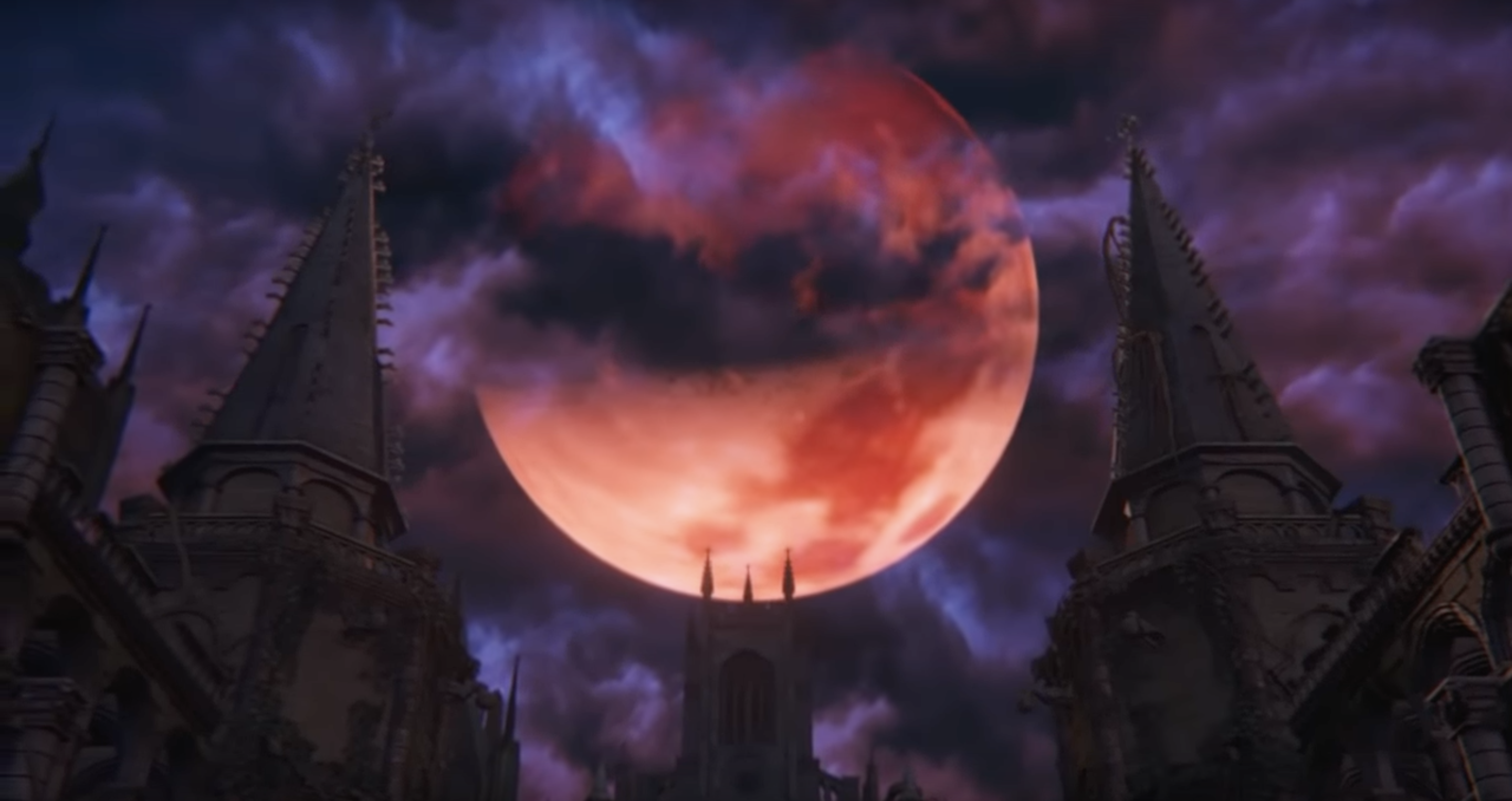
And therein lies the beauty of “Bloodborne’s” narrative. Unlike many games where, while the player goes on quests and fights monsters and saves the day all while having characters tell them why and giving them those quests to begin with, “Bloodborne’s” story is the player’s story. The story can end at any time— the player doesn’t have to keep playing, and yet, chances are, they will. And as the player keeps playing, pieces slot into place, they gain insight and see Yharnam for what it truly is, they meet the few characters still sane and human and listen to the few scant pieces of advice they have, and they continue the hunt to find answers for themselves desperate for the next creeping revelation to hit. Desperate to reap the next reward for themselves and conquer the next bloody battle.
A Hunter Must Hunt
“Bloodborne” rewards its players. The further one gets into the game, the more weapons they have, the stronger they can get, and the more they get to experience.
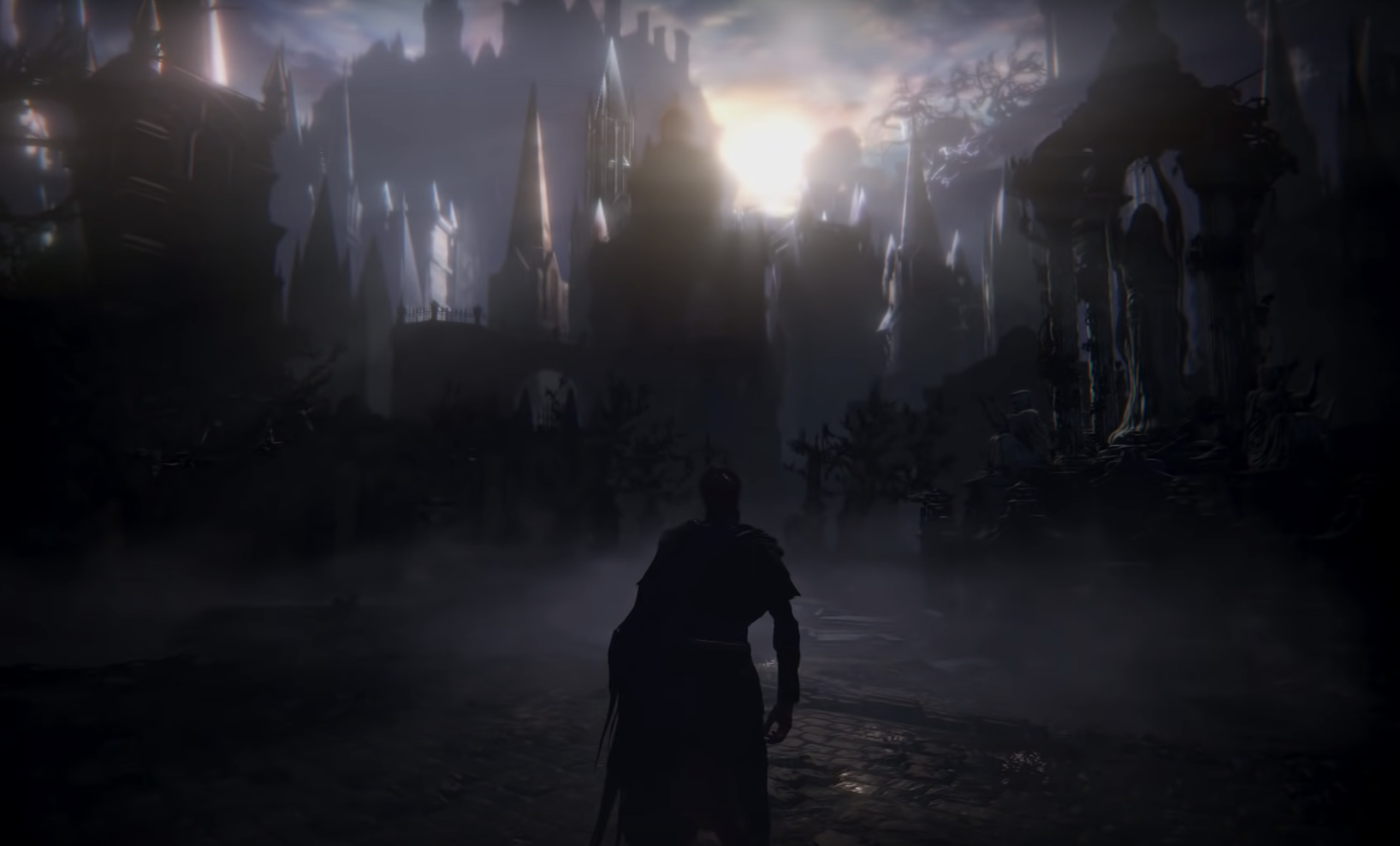
“Bloodborne.” FromSoftware. 2015.
“Bloodborne” weaves together gameplay and narrative to create a deep, rich experience for its players, one filled to the brim with lore and a living, breathing world. It lays the groundwork for the game to come so expertly that it allows the story to flow from a few pieces of information carefully placed to facilitate exploration, encouraging the player to hunt, to go deeper and deeper into Yharnam to discover what truly lies at the center of the hunt.
